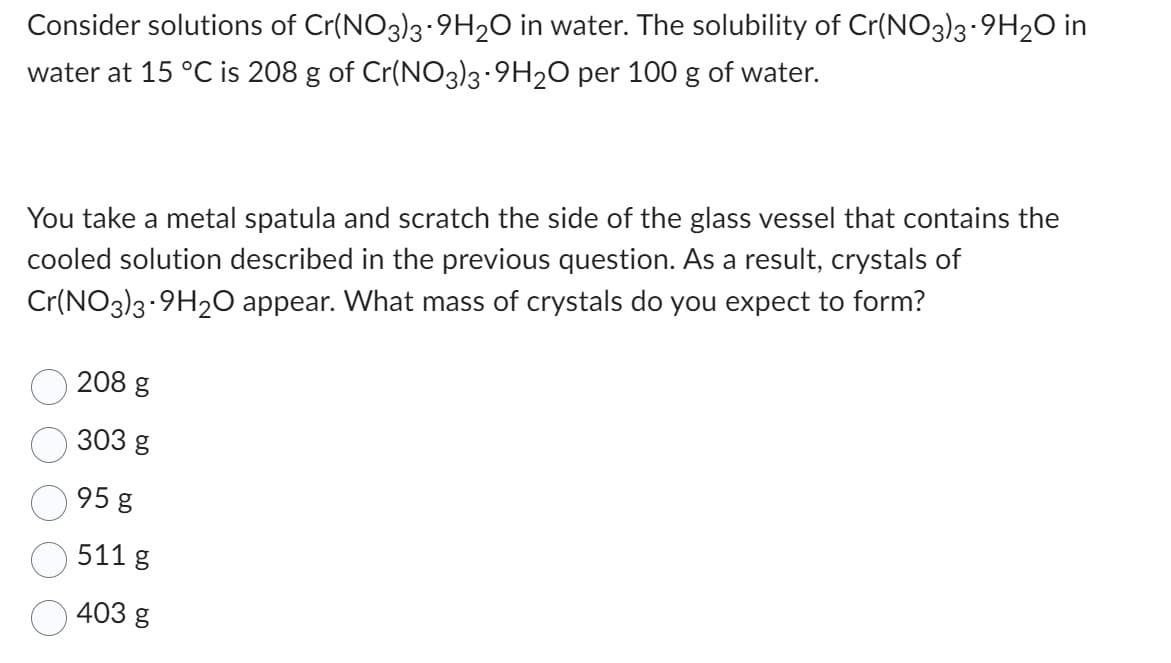Consider solutions of Cr(NO3)3-9H₂O in water. The solubility of Cr(NO3)3-9H2O in water at 15 °C is 208 g of Cr(NO3)3-9H₂O per 100 g of water. You take a metal spatula and scratch the side of the glass vessel that contains the cooled solution described in the previous question. As a result, crystals of Cr(NO3)3-9H2O appear. What mass of crystals do you expect to form? 208 g 303 g 958 511 g 403 g

Introduction
Solubility is an important physical property of matter that is related to a variety of chemical and biological processes. When solubility occurs, the molecules of the solute move apart and become dispersed within the solvent, resulting in a homogeneous solution. The solubility of a substance depends on a variety of factors, including temperature and the type of solute and solvent. In general, solutes with lower polarity and high melting points are more likely to be soluble in a given solvent. For example, table salt is more likely to be soluble in water than in oil because of its high melting point and strong polarity. Solubility is an important property that affects the solute's bioavailability and is a major factor in determining the rate of drug absorption and elimination. In addition, solubility can also be used to calculate the amount of a substance that can be absorbed or dissolved in a given volume of solution.
Trending now
This is a popular solution!
Step by step
Solved in 2 steps







